BEFORE THERE WERE GREEKS AND TURKS, when Athenians, Spartans, Trojans, Myceans and such controlled their turf in the Mediterranean, the Lycians dominated southwestern Anatolia. And while their civilization was successively ruled — and influenced — by the Persians, Greeks and Romans, places like Myra, Xanthos, Letoon and Dalyan attest to their history.
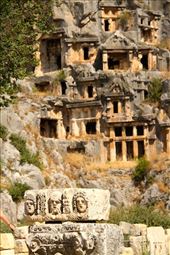
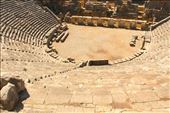
Tombs of Myra View from the cheap seats, Myra
Lycians, if the amphitheater at Myra is any indication, had a love of life. And it is obvious that they had more than a passing interest in the afterlife. Some of the sites are dominated by the necropolis, the city of the dead, with hundreds of intricately carved stone sarcophagi scattered along the hillsides and tombs carved into the rock faces.
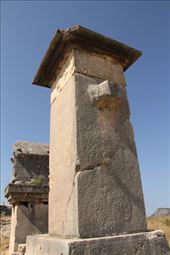
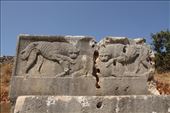
Harpy Tower, Xanthos Lions, Xanthos
When we first encountered the Lycians eight years ago, we all but shouted, “These are Lycian tombs!” — they were that unique to us. This time around we spent more time trying to piece together the Lycian role in the history of the region, placing it against what we have since learned about the other civilizations in the Mediterranean. That and replacing our outdated film photographs with new technology and, I hope, more skillfully recorded digital shots.

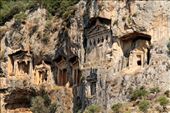
Letoon Tombs of Dalyan
We probably should have based our final Lycian days at the picturesque town of Dalyan but we remembered it as cold and deserted. Not any longer. The bougainvillea are in bloom everywhere and there are more pensions than we remembered. There are 500 boats waiting to take tourists to Turtle Island but we saw fewer than 500 tourists, boding poorly for the tourist season. Instead we stayed in Fetihye, just a hop skip and jump from Rhodes, at the wonderfully cheap Ten Apartment, $33 a night with a full kitchen, and took a day trip to see the rock tombs of Dalyan.